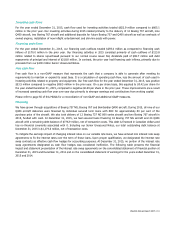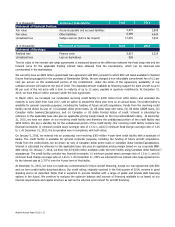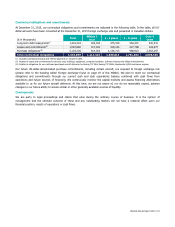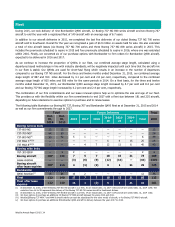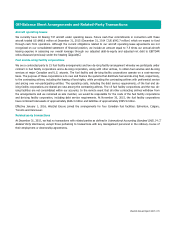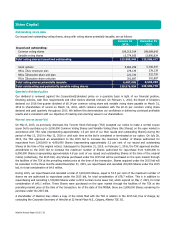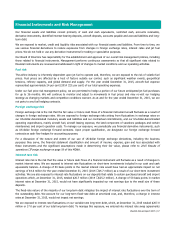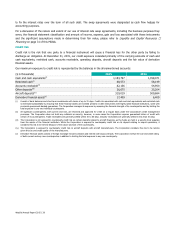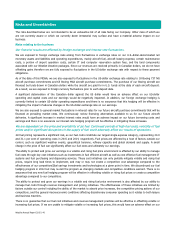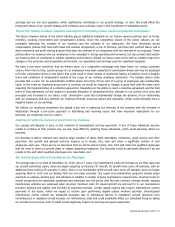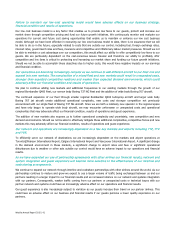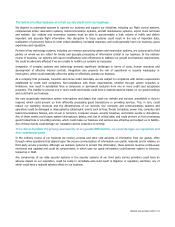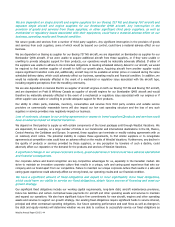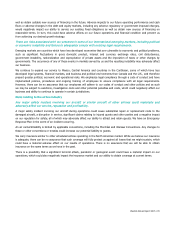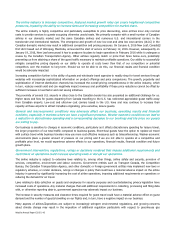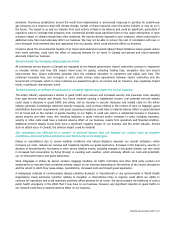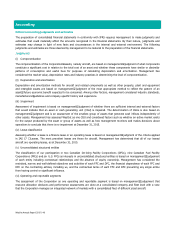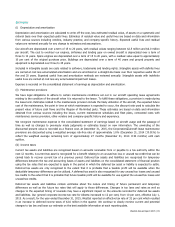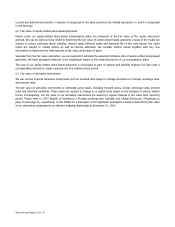Westjet 2015 Annual Report Download - page 43
Download and view the complete annual report
Please find page 43 of the 2015 Westjet annual report below. You can navigate through the pages in the report by either clicking on the pages listed below, or by using the keyword search tool below to find specific information within the annual report.WestJet Annual Report 2015 | 41
earnings and our low cost operation, which significantly contributes to our growth strategy. In turn, this could affect the
timing and nature of our growth strategy and initiatives and could also result in the curtailment of scheduled service.
The airline industry is labour intensive and subject to increasing labour costs and potential unionization.
The labour intensive nature of the airline industry places additional emphasis on our human resource policies such as hiring,
retention, working environment and compensation policies. Given the competitive nature of the airline industry we are
constantly balancing the interests of our business and the interests of our employees. We have developed strong
compensation policies that have both fixed and variable components, a mix of full-time, part-time and contract labour and a
share ownership and profit sharing program that align the interests of our employees with the interests of our business. These
policies allow our business and our employees to be rewarded in strong operating environments, but also protect and sustain
our business and our employees in weaker operating environments. Should our labour costs not be able to suitably respond to
changes in the economic and competitive environment, our operations and earnings could be negatively impacted.
We have a non-union workforce that we believe gives us a competitive advantage and helps foster our unique corporate
culture. From time to time, certain groups of our employees have been subjected to unionization drives and may be subjected
to further unionization drives in the future that could result in these classes of employees having a collective voice to bargain
terms and conditions of employment outside of the scope of our existing employee association. The Canada Labour Code
provides that a union can be automatically certified where more than 50 per cent of a group of employees sign membership
cards. In the event an employee group were to unionize, we would be required to bargain in good faith with the trade union
regarding the implementation of a collective agreement. Depending on the ability to reach a collective agreement and the final
terms of that agreement, we are subject to potential disruption in scheduled service, changes to our current work rules and
processes and increases to our labour costs. Unionization could also fundamentally change the dynamic of our relationship
with our employees and may diminish our employee-friendly corporate culture and reputation, which could ultimately have a
negative impact on our earnings.
We believe our employee association has played a key role in balancing the interests of the business with the interests of
WestJetters through a pro-active approach to identifying and resolving issues that have important implications for our
business, our employees and our culture.
Inability to retain key personnel could harm our business.
Our success will depend, in part, on the retention of management and key personnel. If any of these individuals become
unable to continue in their present role, we may have difficulty replacing these individuals, which could adversely affect our
business.
Our business is labour intensive and requires large numbers of pilots, flight attendants, mechanics, guest service and other
personnel. Our growth and general turnover requires us to locate, hire, train and retain a significant number of new
employees each year. There can be no assurance that we will be able to locate, hire, train and retain the qualified employees
that we need to meet our growth plans or replace departing employees. Our business would be adversely affected if we are
unable to hire and retain qualified employees at a reasonable cost.
Our maintenance costs will increase as our fleet ages.
The average age of our fleet at December 31, 2015, was 6.7 years. Our maintenance costs will increase as our fleet ages and
our aircraft warranties expire. Since we began acquiring our Boeing 737 aircraft, 92 aircraft have come off warranty, with an
additional three coming off warranty in 2016. None of our Bombardier Q400 aircraft have come off warranty since we began
acquiring them in 2013 and our Boeing 767s are not under warranty. Our repair and maintenance programs include larger
overhauls to engines, landing gear and airframes in addition to smaller ongoing maintenance requirements. Overhaul costs on
owned components are separately capitalized and amortized over the period until the next overhaul whereas smaller ongoing
maintenance activities are expensed when incurred. Overhaul costs for leased aircraft are accrued for in our maintenance
provision expense and liability until the date of expected overhaul. Certain leased engines also require maintenance reserve
payments to the lessor, which we expect to reclaim upon performing eligible engine overhaul activities. Unanticipated
maintenance events outside our scheduled programs due to mechanical failures or mandatory aircraft directives from
manufacturers or regulators would increase our maintenance costs and could potentially affect our scheduled flying by taking
our aircraft out of service, both of which would negatively impact our earnings and guest experience.


